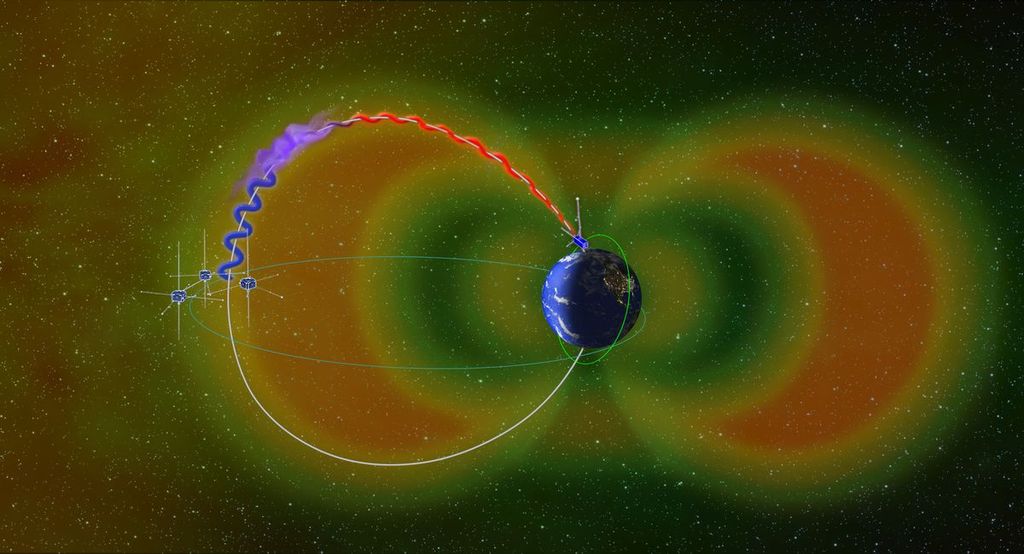Ultra-fast electron rain is pouring out of Earth's magnetosphere, and scientists think they know why
By Brandon Spec
published about 1 hour ago
Electron downpours can contribute to the aurora and damage spacecraft, the researchers said.

An illustration showing the donut-shaped Van Allen radiation belts swirling around Earth, with electrons spiraling through them. (Image credit: Zhang, et al., Nature Communications, 2022)
Tomorrow's weather may be cloudy with a chance of electrons, thanks to a newly detected phenomenon in Earth's magnetic shield.
Described as unexpected, ultra-fast "electron precipitation," the phenomenon occurs when waves of electromagnetic energy pulse through Earth's magnetosphere – the magnetic field generated by the churning of Earth's core, which surrounds our planet and shields it from deadly solar radiation. These electrons then overflow from the magnetosphere and plummet toward Earth.
The torrential electron rains are more likely to occur during solar storms, and they may contribute to the aurora borealis, according to research published March 25 in the journal Nature Communications. However, the researchers added, electron rains may also pose a threat to astronauts and spacecraft in ways that space radiation models don't currently account for.
"Although space is commonly thought to be separate from our upper atmosphere, the two are inextricably linked," study co-author Vassilis Angelopoulos, a professor of space physics at the University of California Los Angeles (UCLA) said in a statement. "Understanding how they're linked can benefit satellites and astronauts passing through the region."
More:
https://www.livescience.com/electron-rain-source
